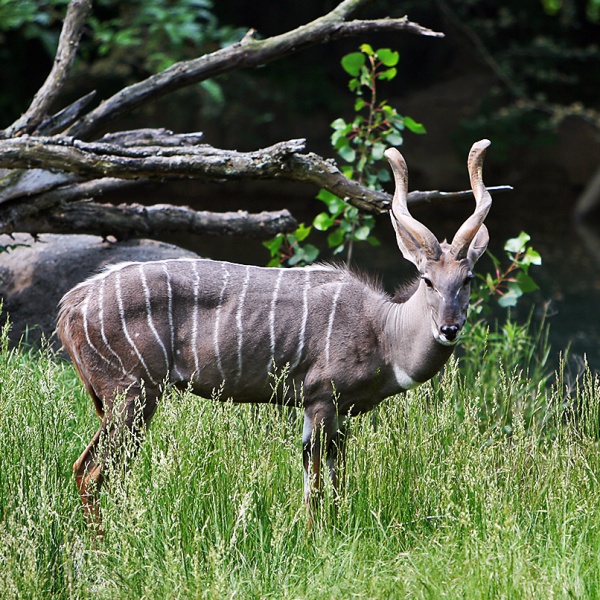Facts About Lesser kudu
The lesser kudu is a striking forest antelope native to East Africa. It belongs to the genus *Tragelaphus* and the family *Bovidae*. Males typically stand about 95-105 cm tall at the shoulder, while females are slightly shorter. Males weigh between 92-108 kg, whereas females weigh between 56-70 kg. Younger females and juveniles exhibit a reddish-brown coat, which males transition to a yellowish-grey or darker hue upon reaching two years of age. A prominent feature of males is their spiral horns, which can measure between 50-70 cm in length and typically have two to two-and-a-half twists.
In terms of diet, the lesser kudu primarily consumes leaves from bushes and trees, which constitute about 60-80% of their food intake throughout the year. These antelopes are nocturnal, being most active during the night and early morning hours. During the day, they prefer to seek refuge in dense vegetation. Unlike some other species, lesser kudus do not establish territories. Females are generally social and form groups, while adult males tend to be solitary.
Breeding can occur at any time of the year. Following a gestation period of 7-8 months, a female typically gives birth to a single calf.
The lesser kudu inhabits various countries in East Africa, although it has become extinct in Djibouti. Unfortunately, their population is declining, with an estimated 118,000 individuals remaining. They are threatened by factors such as rinderpest outbreaks, overgrazing, human encroachment, and habitat loss. The International Union for Conservation of Nature (IUCN) has classified them as "near threatened." Approximately one-third of the lesser kudu population resides in protected areas, providing some optimism for their conservation.
Scientifically, the lesser kudu is known as *Tragelaphus imberbis* and possesses 38 diploid chromosomes, including unique compound X and Y chromosomes fused with autosomes. They prefer dry, flat, and heavily forested areas, usually at altitudes below 1,200 meters. The Saint Louis Zoo even highlights the elegance of the male lesser kudu, particularly their impressive spiral horns.

 Ethiopia
Ethiopia